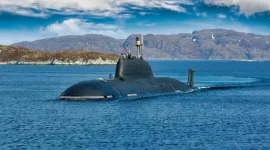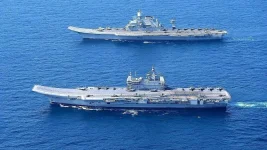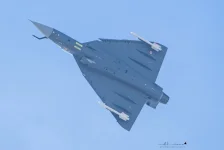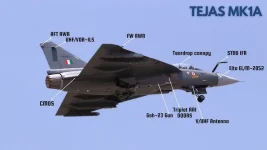- Views: 3K
- Replies: 15
India's second Indigenous Aircraft Carrier (IAC-2) is likely to feature a significant shift in propulsion technology, potentially adopting the Rolls-Royce MT-30 gas turbine with an Integrated Electric Propulsion System (IEPS). This move would represent a departure from the US-supplied LM2500 engines currently powering the IAC-1, INS Vikrant, and align India with global trends in naval propulsion.
The Rolls-Royce MT-30 is recognized as one of the world's most power-dense marine gas turbines, offering exceptional power output that has been demonstrated on advanced platforms like the Royal Navy's HMS Queen Elizabeth and HMS Prince of Wales aircraft carriers. These carriers utilize the MT-30 in conjunction with electric propulsion systems, resulting in operational flexibility, reduced noise, and enhanced efficiency.
First deployed in 2008 aboard the USS Freedom, a Littoral Combat Ship of the US Navy, the MT-30 is known for its compact design and impressive power generation capabilities. Each turbine can produce up to 36 MW of power, enabling ships to achieve speeds exceeding 40 knots when combined with diesel engines.
This potential shift towards the MT-30 is further supported by the establishment of a Joint Working Group on Electric Propulsion Capability Partnership between India and the UK. This collaborative effort aims to foster knowledge exchange and industrial cooperation in electric propulsion, increasing the likelihood of Rolls-Royce propulsion systems being integrated into future Indian Navy vessels, including destroyers, frigates, corvettes, and landing platform docks (LPDs).
The adoption of the MT-30 for the IAC-2 would underscore India's intent to diversify its sources for critical naval technologies and transition away from traditional propulsion systems predominantly sourced from the US, Russia, and Ukraine. By embracing Rolls-Royce marine gas turbines, the Indian Navy aims to achieve several key advantages:
- Enhanced Performance: The MT-30's power and efficiency could translate to improved ship performance, including higher speeds and greater operational range for the IAC-2.
- Reduced Maintenance Costs: Modern gas turbines like the MT-30 generally require less maintenance compared to older systems, potentially leading to reduced operational costs over the lifespan of the vessel.
- Alignment with Global Best Practices: Integrating the MT-30 and IEPS would bring the IAC-2 in line with global trends in naval propulsion technology, enhancing interoperability and technological compatibility with allied navies.




